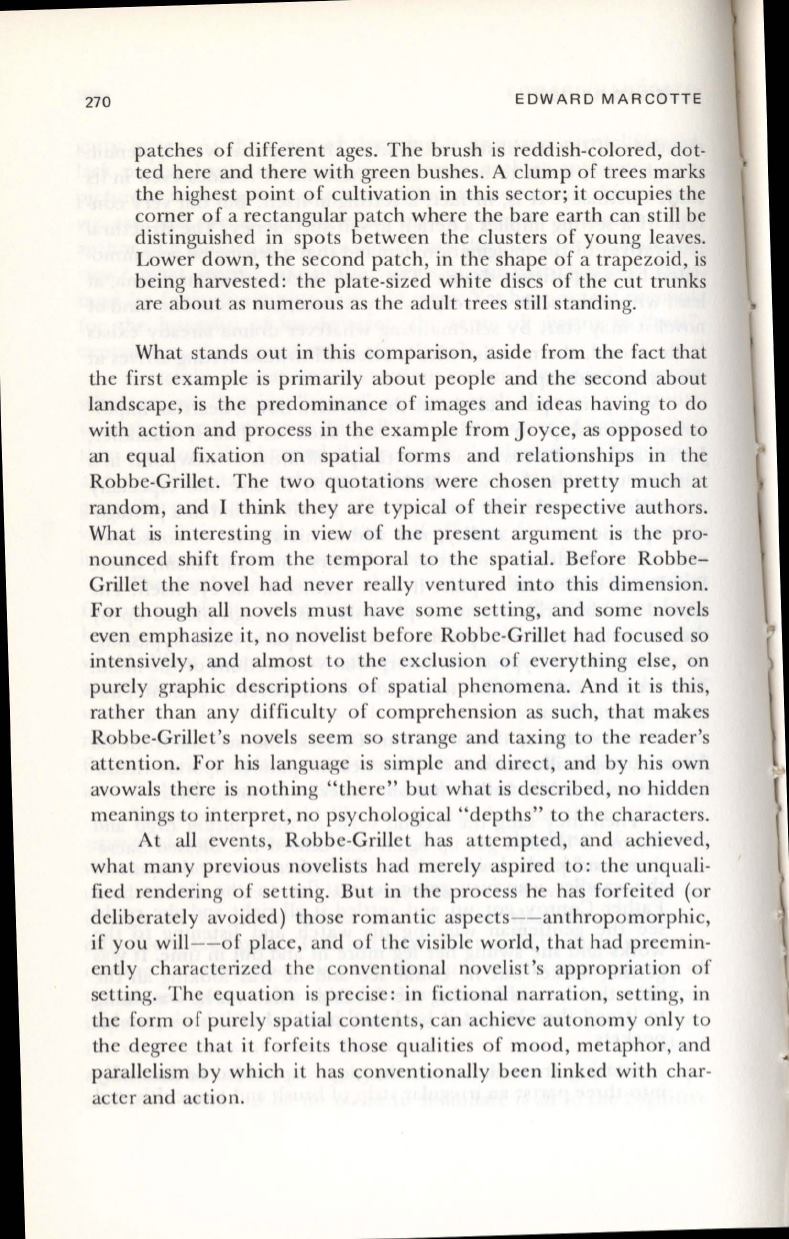
270
EDWARD MARCOTTE
patches of different ages. The brush is reddish-colored, dot–
ted here and there with green bushes. A clump of trees marks
the highest point of cultivation in this sector; it occupies the
corner of a rectangular patch where the bare earth can still be
distinguished in spots between the clusters of young leaves.
Lower down, the second patch, in the shape of a trapezoid, is
being harvested: the plate-sized white discs of the cut trunks
are about as numerous as the adult trees still standing.
What stands out in this comparison, aside from the fact that
the first example is primarily about people and the second about
landscape, is the predominance of images and ideas having to do
with action and process in the example from Joyce, as opposed to
an equal fixation on spatial forms and relationships in the
Robbe-Grillet. The two quotations were chosen pretty much at
random, and I think they are typical of their respective authors.
What is interesting in view of the present argument is the pro–
nounced shift from the temporal to the spatial. Before Robbe–
Grillet the novel had never really ventured into this dimension.
For though all novels must have some setting, and some novels
even emphasize it, no novelist before Robbe-Grillet had focused so
intensively, and almost to the exclusion of everything else, on
purely graphic descriptions of spatial phenomena. And it is this,
rather than any difficulty of comprehension as such, that makes
Robbe-Grillet's novels seem so strange and taxing to the reader's
attention. For his language is simple and direct, and by his own
avowals there is nothing "there" but what is described, no hidden
meanings to interpret, no psychological "depths" to the characters.
At all events, Robbe-Grillet has attempted, and achieved,
what many previous novelists had merely aspired to: the unquali–
fied rendering of setting. But in the process he has forfeited (or
deliberately avoided) those romantic aspects--anthropomorphic,
if you will--of place, and of the visible world, that had preemin–
ently characterized the conventional novelist's appropriation of
setting. The equation is precise: in fictional narration, setting, in
the form of purely spatial contents, can achieve autonomy only to
the degree that it forfeits those qualities of mood, metaphor, and
parallelism by which it has conventionally been linked with char–
acter and action .


